AI at Work
What Exactly Is Answer Engine Optimization (AEO) And Why Does It Matter?

Bryan Kitch · Senior Content Marketing Manager
September 10th, 2025 · 17 min read

Your carefully written and structured blog posts had been consistently hitting page one of Google. Traffic was up, leads were flowing, and your SEO strategy felt bulletproof. But lately, you’ve seen a shift in these trends. Your impressions may still be growing, but clicks have slowed down (maybe a lot).
This is because your audience is increasingly getting their information from ChatGPT, Google's AI overviews (AIOs), Perplexity, or other LLM-based tools rather than directly from your blog.
Welcome to the age of Answer Engine Optimization (AEO), where AI systems first index your content, then digest it, synthesize it, and serve it up as direct answers, all without sending traffic your way. This evolution has also given rise to the phenomenon of zero-click search. According to a recent study by SEMrush, 13.14% of US desktop queries now result in AI-generated answers.
This shift changes everything you know about how content gets discovered and consumed. For brands, it means visibility is more complex than ranking first on a search engine results page (SERP). It’s about being cited as the authoritative source within the answer itself.
To thrive in this new search environment, brands have to make sure their content is easy to discover (traditional SEO), as well as original, citable, and “synthetic-ready” — that is, prepared for direct integration into AI-generated answers. The challenge for content marketing managers is clear: adapt strategies to meet the demands of AI answer engines, or risk losing visibility in a search world where everyone is looking for quick, immediate solutions.

What is Answer Engine Optimization (AEO)?
Answer Engine Optimization or AEO is the practice of structuring and formatting content so AI-powered systems can easily understand, extract, and present your information as direct answers to user queries.
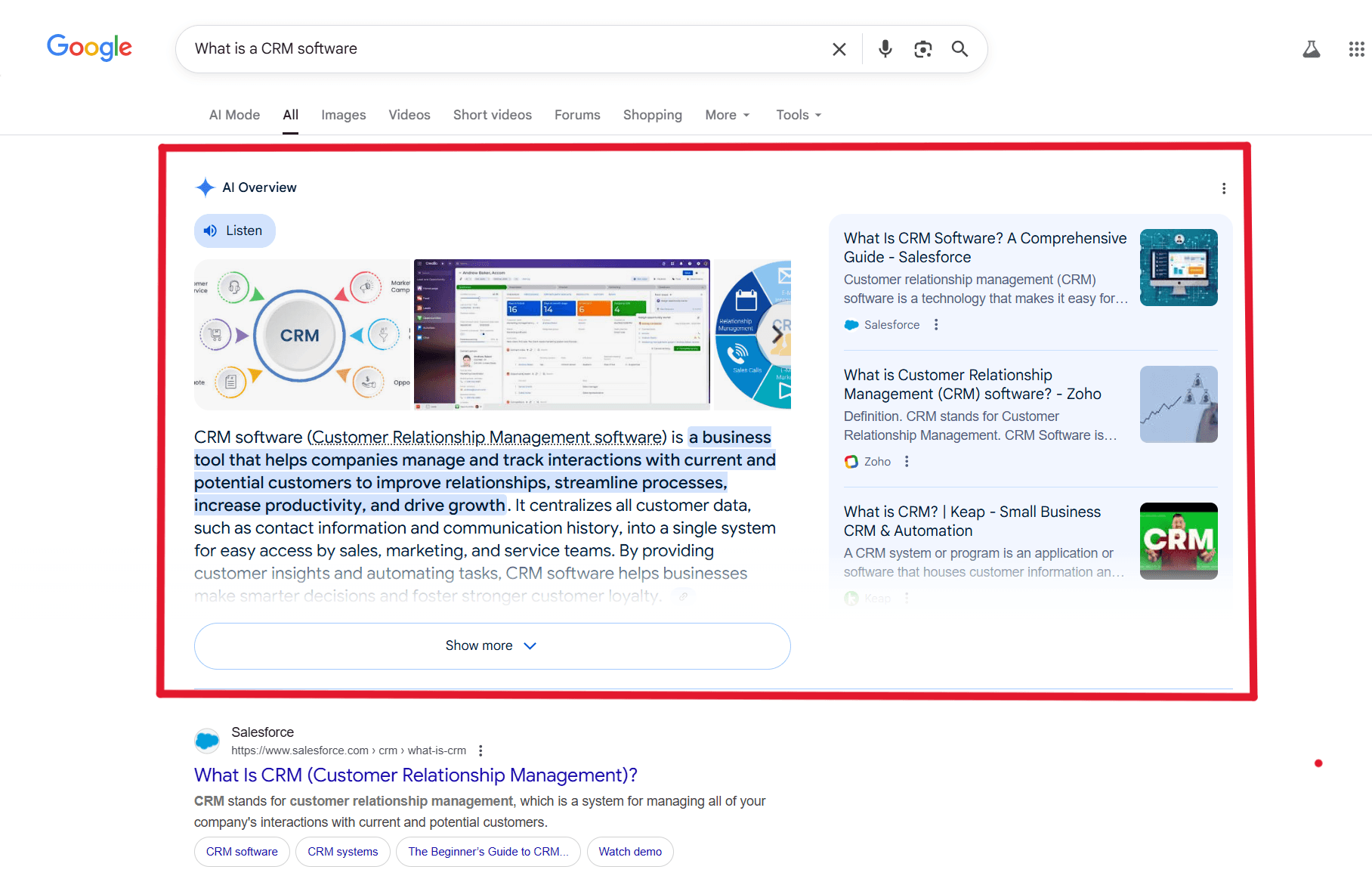
AI Overviews on Google Search are an example of AEO
Unlike classic SEO tactics, which focus on ranking for keywords and driving clicks, AEO is about being cited by AI systems as the definitive answer to user queries.
How does AEO differ from classic SEO tactics?
When you compare AEO vs SEO, you will notice fundamental differences in several aspects:
Goals
SEO aims for high SERP rankings and increased web traffic. AEO targets citation in AI-generated answers, prioritizing brand visibility within the answer itself.
Direct answers over keywords or links
Unlike traditional search engines, AI answer engines surface brands by citing their content directly, bypassing the need for users to click through to a website (yes, argh). The AI needs context to give accurate answers, and keyword density or internal links alone don’t guarantee a place in AI-generated overviews.
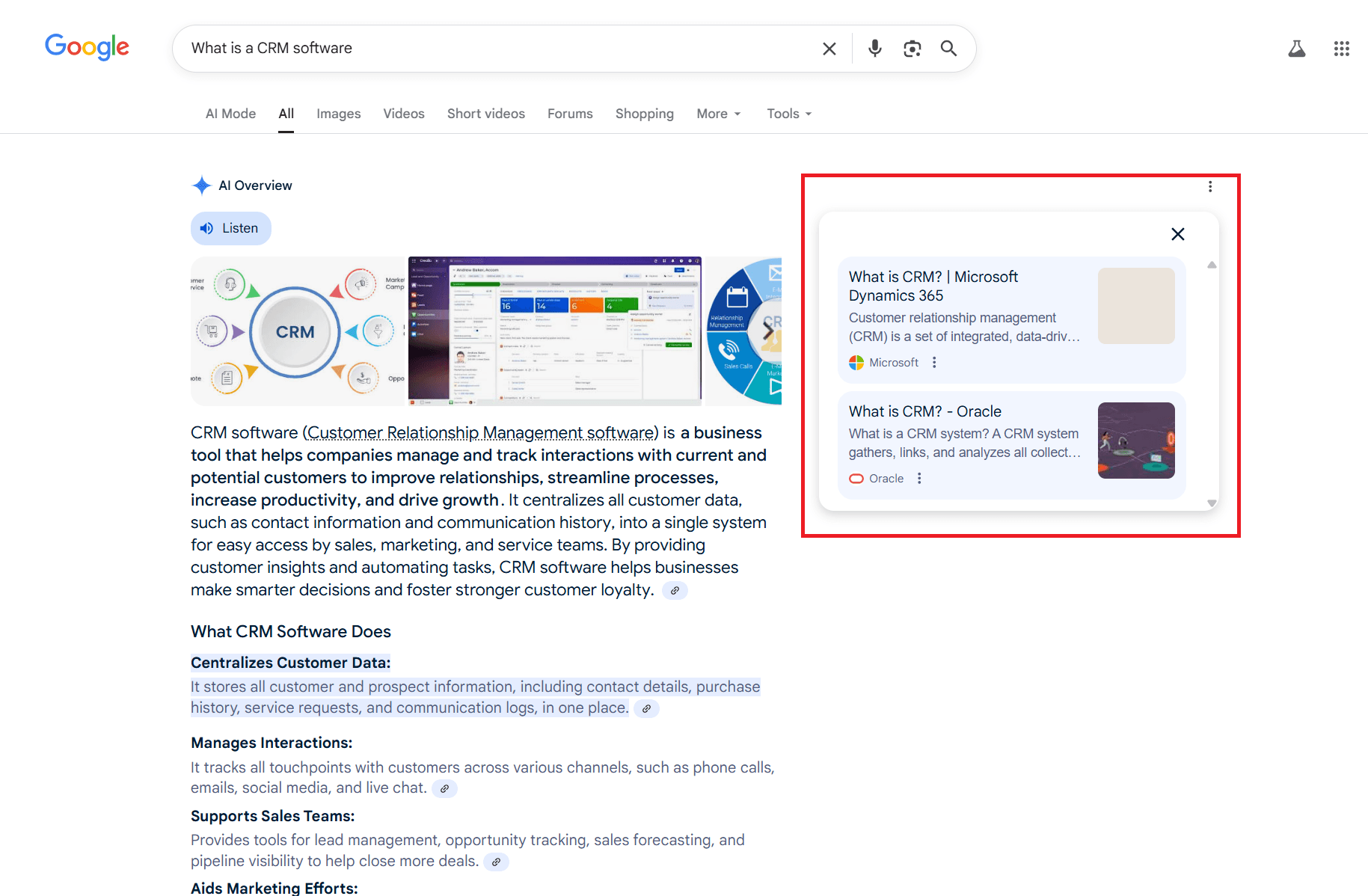
Pages that offer direct answers are more likely to be cited in AI overviews
Query style
SEO often centers on keyword-based queries, while AEO targets more conversational, long-tail, and natural language questions.
Authoritative, structured, and succinct content
AEO content must be clear, authoritative, and structured for easy interpretation by AI. This means ideally using schema markup, or at least concise headings, and well-organized data.
Technical and strategic requirements
Success in AEO requires both technical optimization (site speed, mobile usability, structured data) and strategic positioning (cross-platform authority, expert profiles, authoritative citations, etc.)
Measurement
AEO success is tracked using metrics such as featured snippet mentions, answer box appearances, voice search share, and brand mentions in AI-generated results, instead of just organic traffic or keyword rankings.
However, all differences aside, AEO builds on SEO, rather than replacing it. Strong SEO fundamentals — clear headings, good structure, authoritative content — actually make your content easier for AI systems to find and reference, just as they make it easier for human readers to scan, and bots to crawl.
How does AEO impact content discovery in enterprise marketing?
Enterprise buyers increasingly use AI tools throughout their research process. They might ask ChatGPT to explain complex product categories, compare solutions, or identify evaluation criteria. If your content isn't optimized for these interactions, you're missing opportunities to influence purchase decisions at the earliest stages.
Consider an HR Director researching Enterprise Resource Planning (ERP) tools. Traditional SEO might bring them to your comparison guide through Google. AEO ensures that when they ask an AI assistant "What should I look for in ERP software?" your content shapes the answer, even if they don’t visit your website.
Here’s how this drives brand growth:
Visibility: Brands cited by AI answer engines gain immediate exposure, often bypassing traditional web traffic channels.
Trust: Direct citation by AI platforms signals authority and reliability, building user confidence.
Actionability: The enhanced brand visibility in AI-generated answers can in turn trigger actions, such as demo bookings or purchases, improving conversion rates.
Which AI systems count as answer engines?
The ecosystem is expanding rapidly, but several key players already influence how millions of people find information:
ChatGPT is popular for its conversational search capabilities and pulls from its training data to provide detailed responses. With the web search capability, it can also synthesize information from trusted sources online.
Google Gemini is embedded in Google’s search and assistant platforms and creates AI overviews that appear above regular search results. These AI-generated summaries often combine information from multiple sources, giving well-optimized content a chance to be featured even if it doesn't rank #1 organically.
Perplexity positions itself as an answer engine that provides sourced responses with citations. Content that clearly states facts and provides context tends to get referenced more frequently.
Claude helps users research topics, create content, and solve problems. It is also increasingly being integrated into websites and platforms for instant answers and support tasks.
Microsoft Copilot (formerly Bing Chat) is Microsoft’s AI-integrated search tool generating live AI summaries and responses along with traditional results.
DeepSeek AI is an emerging engine offering direct answers with citations from broad, trusted datasets.
What kind of content does best in AI-powered answer engines?
Success in AI-powered answer engines hinges on creating content that is structured, authoritative, and ready for direct citation. AI excels at extracting information from:
Structured explanations that define concepts, list key takeaways, and provide context. Instead of burying your main point in the third paragraph, lead every section or subheading with a clear explanation and expand from there.
Process-oriented content that breaks down complex topics into logical steps. AI systems can easily extract and present step-by-step guidance, making how-to content particularly valuable for AEO.
Comparative analysis that clearly outlines differences between options, approaches, or solutions. When someone asks AI to compare alternatives, well-structured comparison content often gets referenced.
FAQ-style content that anticipates and answers specific questions. This format naturally aligns with how people interact with AI assistants, making it easier for answer engines to match your content with user queries.
Experiential and user-generated content is highly valued for its authenticity and relevance. Insights from subject matter experts, executives, influencers, and real users add authority and trust.
Why high-quality offsite mentions matter for AEO?
Think of offsite mentions as your brand's reputation in the wild. AI systems pay attention to who's talking about your brand and where.
AI answer engines aren't just reading your content in isolation. They're also checking to see if other credible sources think your insights or your brand are worth sharing. This is referred to as grounding and helps prevent AI model hallucinations, anchoring responses to verifiable data sources.
When industry publications cite your research, when respected thought leaders recommend your solutions, or when your brand gets referenced in industry news, that's gold for AEO.
Trust and authority
Off-site mentions serve as third-party validation, signaling to answer engines that your brand is recognized as a trusted, relevant source.
These references build digital authority by establishing a broader consensus about your brand or organization.
Knowledge graph inclusion
Being cited on reputable, contextually related sites enriches your presence in knowledge graphs, which modern answer engines rely on to understand and retrieve information.
Podcasts, interviews, and editorial mentions help search engines better connect facts about your business, making direct answers more accurate and likely to be drawn from such content.
Entity recognition and disambiguation
Off-site signals help answer engines differentiate between entities with similar names, addressing any ambiguity in user questions and ensuring more precise and relevant responses.
Consistent external references across a variety of sources make it easier for answer engines to accurately associate the right content with your brand.
Direct answers and voice results
When answer engines source direct answers, they prioritize data corroborated by diverse, authoritative references outside of your owned properties.
External mentions create structured data that increase the likelihood of appearing as a source for answer boxes and voice search results.
How to start optimizing content for AEO
The transition to AEO doesn't require scrapping your entire content strategy. You can begin with targeted improvements that benefit both answer engines and traditional search.
TL;DR Here’s a comprehensive AEO Checklist:
Structure content for direct answers:
Lead with a concise (40–60 word) direct answer after the heading/question.
Use clear headings, bullet points, and concise summaries.
Prioritize conversational, long-tail phrases over generic keywords.
Create FAQ sections and how-to guides on relevant pages/topics.
Implement schema markup:
Add structured data to help AI engines interpret your content.
Use relevant schema types (e.g., FAQ, How-to, Product).
Optimize title tags and meta descriptions with target questions.
Refine technical SEO:
Ensure fast site speed and mobile usability.
Use clear HTML structure, matching each answer with its related question in code.
Internally link related question-answer content to create answer 'clusters'.
Optimize multimodal content:
Tag images, videos, and audio files for easy parsing.
Provide transcripts and accessible presentations.
Monitor citation and performance:
Track performance in featured snippets, AI citations, voice results, and organic traffic.
Regularly refresh, expand, or revise outdated or underperforming content to maintain visibility.
Build authority & trustworthiness:
Demonstrate expertise, add author bios, and cite reputable sources.
Keep facts and data updated.
Maintain a consistent, quality-focused publishing schedule.
Find mentions on external websites, interviews, podcasts and other media
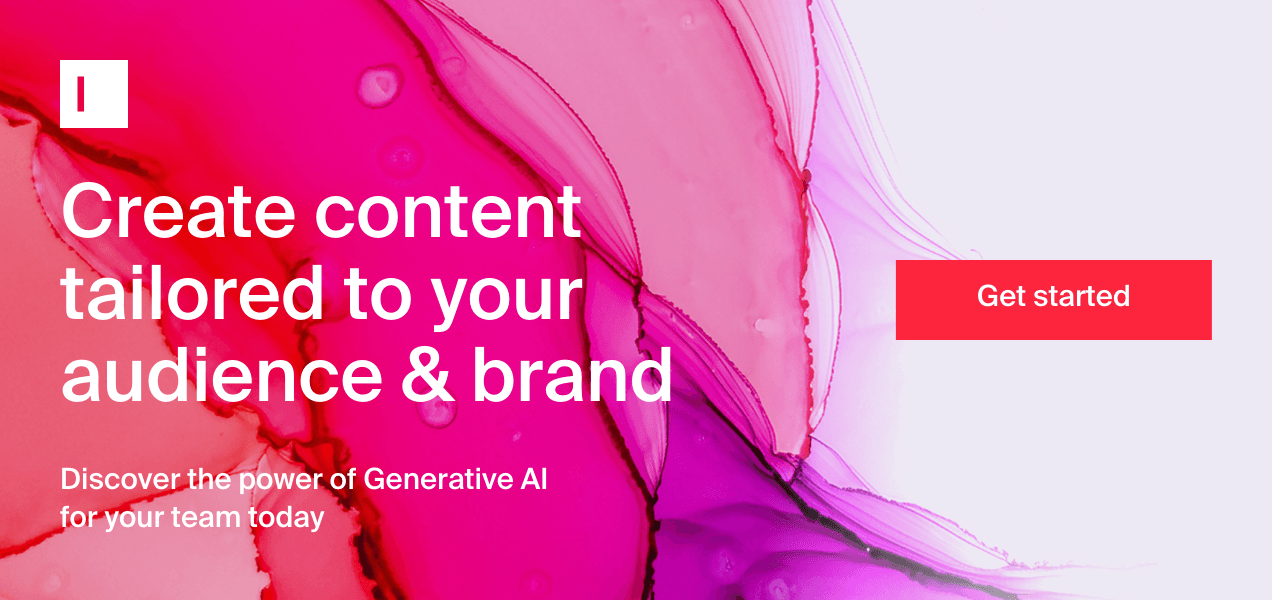
Some key strategies you can adopt when optimizing content for AEO include the following.
1. Understand user intent and queries
Answering user questions is at the heart of AEO. Optimizing content to surface on answer engines requires thorough research on what real users are asking and what could be their intent behind the query.
Look for long-tail, conversational queries, and structure your content around answering specific questions directly. Tools like Google Keyword Planner and Typeface AI agent for SEO and web content can come in handy here.
Typeface Web Agent offers recommendations on content structure based on top ranking pages as well as FAQs based on user queries sourced from Google, Reddit, Quora and other platforms.
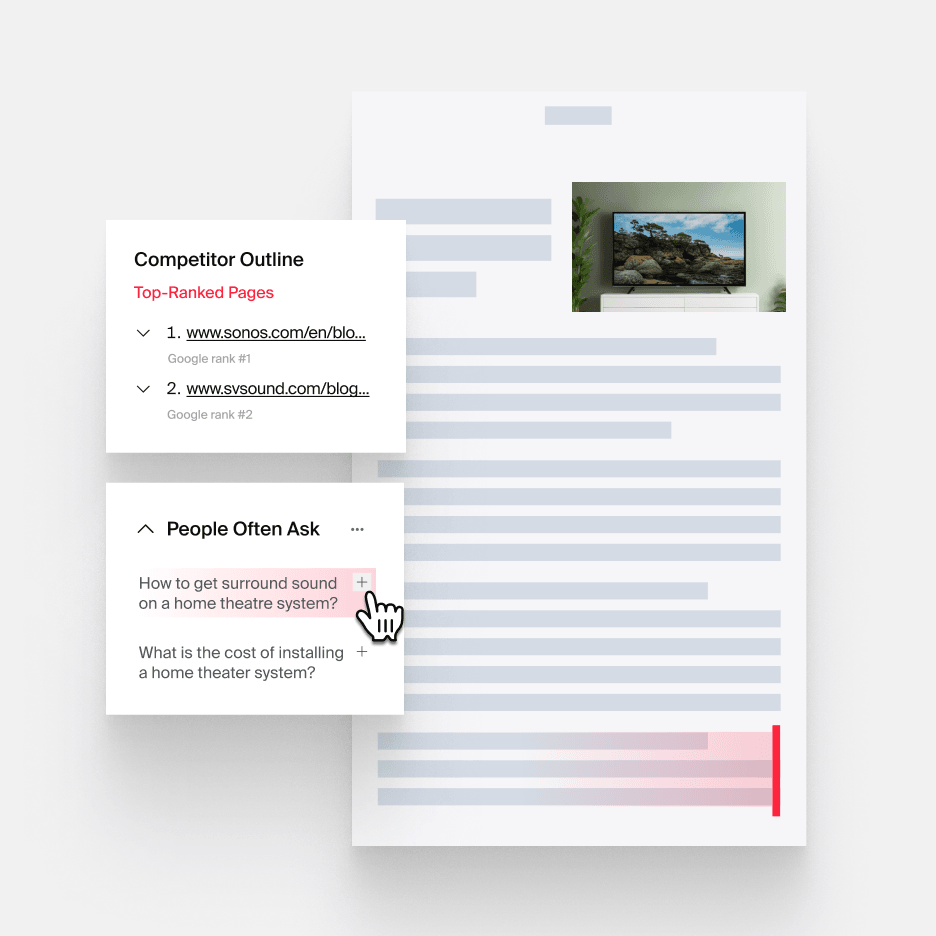
2. Provide valuable, original answers
Just like in SEO, content quality plays a crucial role in AEO too. Offering generic advice isn’t enough. AI answer engines favor content that is original and valuable to users. Make sure your content offers unique, informative solutions that are tailored to your target audience.
(Hint: this isn’t easy — good content still takes time.) But creating personalized content for your audiences does become significantly easier with Typeface. You can save your audience profiles, including demography, purchasing behavior and interests, or import existing audiences from your Customer Data Platforms (CDPs) into the Brand Hub and apply them to content generations.
This dynamic personalization not only enhances the content experience for users, but also ensures that your content appears in AI search for the right target audience.

Adding personal anecdotes, research data, case studies and other original takeaways to your content can also make your content more authoritative and useful.
3. Structure content for easy “snippability”
Admittedly a brutal buzzword, but still, “snippability” matters. Organize information using headings (especially H2, H3 etc. phrased as questions), bullet points, numbered lists, steps, and tables. This improves both user readability and machine extraction.
Consider setting up your text style guide on Typeface’s Brand Hub, where you can add custom style settings for AI to follow, including structure, language, headlines and more.
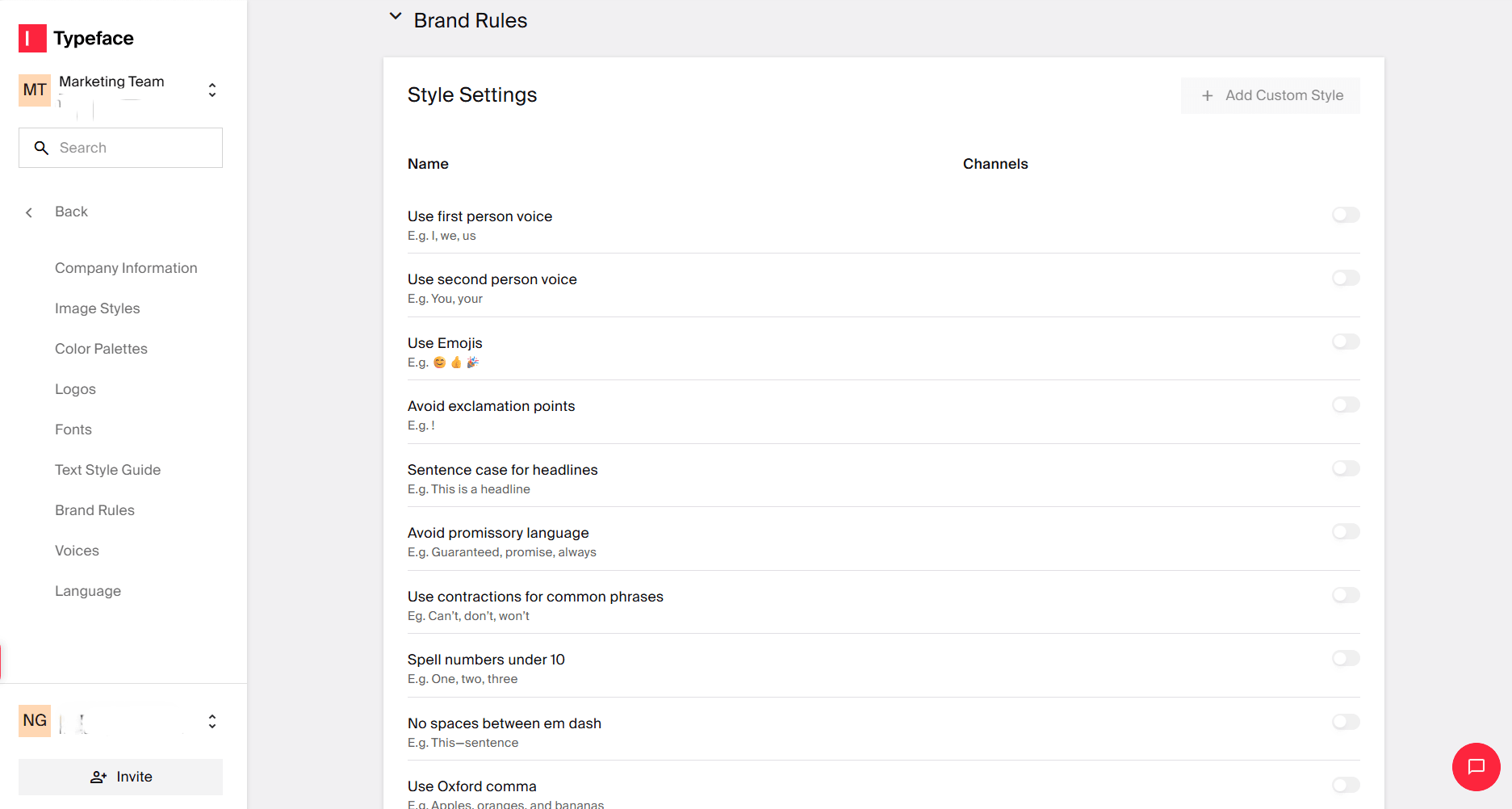
Formatting your content in a way that matches the typical featured snippet requirements increases your chances of appearing in position zero on search engines as well.
Some other best practices here include:
Using shorter paragraphs (also helps with scanning)
Highlighting key information in bold or italics (same)
Using visuals (with proper alt tags) to break up the text
Adding high-authority citations, quotes, and stats where relevant
4. Update existing content to target answer engines
When it comes to AEO, fresher content seems to take the cake. An Ahrefs study analyzing 17 million citations across 7 different AI platforms found that the URLs surfaced by AI search engines are 25.7% fresher than those that appeared in organic search results. The study also found that platforms like Perplexity and ChatGPT arranged their in-text citations from the newest to the oldest.
This does not necessarily mean you need to publish net-new content every day. It just means updating your content regularly is more important now than ever before.
Look for content that has performed well in the past and think of how you can add more value to it from an AEO perspective:
Does it include FAQs?
Does it address relevant questions users might have right now?
Is it structured well enough to be synthesized by AI?
5. Create comprehensive FAQ sections
Over and above using headings phrased as questions, having an FAQ section in every blog article or web page can significantly improve your chances of success with AEO (note the end of this very post...).
FAQs offer clear and concise answers to common questions, adding to the user experience and helping answer engines easily extract information.
6. Optimize content for voice search
Voice search and AEO are closely connected because both respond to conversational interactions with search and AI assistants, moving away from keyword-based queries.
The number of voice search users in the US alone is expected to grow up to 170.3 million by 2028, according to an eMarketer report. As more users turn to voice search for instant answers, optimizing for AEO becomes essential.
AEO aims to provide instant, precise answers that voice assistants (like Siri, Alexa, or Google Assistant) can read aloud to users. Some best practices in optimizing for voice search include adopting a conversational style, providing direct answers to questions, and optimizing for location-based or “near me” type of queries, among other things.
7. Use structured data markup
Structured data allows AI systems to easily identify sections of your content such as FAQs, bullets lists, and so on. Schema markup for how-to content, Q&As, steps, or lists can provide more context to both search engines and AI answer engines, improving your SEO and AEO performance.
How to begin answer engine optimization in your content ops
Start small and build momentum rather than overhauling everything at once.
Audit your existing FAQ content first. These pieces already answer specific questions, making them ideal candidates for AEO optimization. Revisit these pieces and ensure each answer is complete, accurate, and includes necessary context.
Identify your most-cited content using tools like Google Search Console or social listening platforms. If people already reference your insights, optimize those pieces to perform better in answer engines.
Create question-focused content around topics where you have genuine expertise. Tip: Look for questions your sales team fields regularly — these represent real information gaps your content can address.
Test and measure by monitoring how AI systems reference your content. Search for topics you cover using different AI assistants and see how often your insights appear in their responses. This will give you a better idea of which content strategies are working for your brand.
Integrate AEO into existing workflows rather than creating separate processes. When briefing new content, brainstorm on ideas like, "What specific question does this answer?" and, "How would an AI system extract the key points?"
Frequently asked questions about AEO and AI answer engines
Can AI writing agents help improve content for AEO?
Yes. AI writing agents can play a valuable role in preparing your content for both SEO and AEO. They can help structure content into clear, question-and-answer formats, which makes it easier for AI systems like ChatGPT or Google’s SGE to pull accurate responses.
Agents can also test different phrasings, shorten explanations into snippet-ready formats, and ensure your answers align with how users actually search. Beyond structure, AI tools can optimize for keywords and readability while maintaining a consistent brand voice.
Is AEO relevant for all industries?
Yes. Any brand seeking visibility in AI-powered search environments can benefit from AEO, regardless of industry or business type.
How does AEO impact my brand’s visibility and growth?
Brands cited by AI answer engines gain immediate exposure, build trust, and drive conversions through actionable answers. AEO is essential for maintaining relevance and authority in the age of AI-powered search.
Will optimizing for AEO hurt my SEO rankings?
No. Actually, the opposite is usually true. AEO principles, like clear headings, direct answers, well-structured content, often improve SEO performance too. Many AEO-optimized pieces perform better in featured snippets and voice search.
Do I need to completely rewrite my existing content for AEO?
No. Start by optimizing your best-performing content that already answers questions clearly. Add direct answers at the beginning, improve your headings, and structure information more clearly. Most content needs tweaking, not total rewriting.
How often should I update content for AEO?
Treat AEO like SEO in this case. Update when information changes or when you notice content isn't performing well in AI responses. For evergreen topics, quarterly reviews work well. For fast-moving industries, monthly updates might be necessary.
Can small marketing teams compete with larger companies in AEO?
Yes, of course. AEO rewards expertise and clarity over domain authority. A small company with deep knowledge in a niche can often get cited more frequently than large companies with surface-level content on the same topics.
Future-proof your content strategy with AEO
The future of search and content discovery is being shaped by AI answer engines and evolving user expectations. AEO is more than just a technical upgrade. It’s a strategic imperative for brands seeking growth, visibility, and trust in the age of AI-powered search.
Ready to create marketing campaigns that wow audiences and answer engines alike?
Get a demo of Typeface so we can show you how our platform helps marketers build better content, faster (and at enterprise scale).
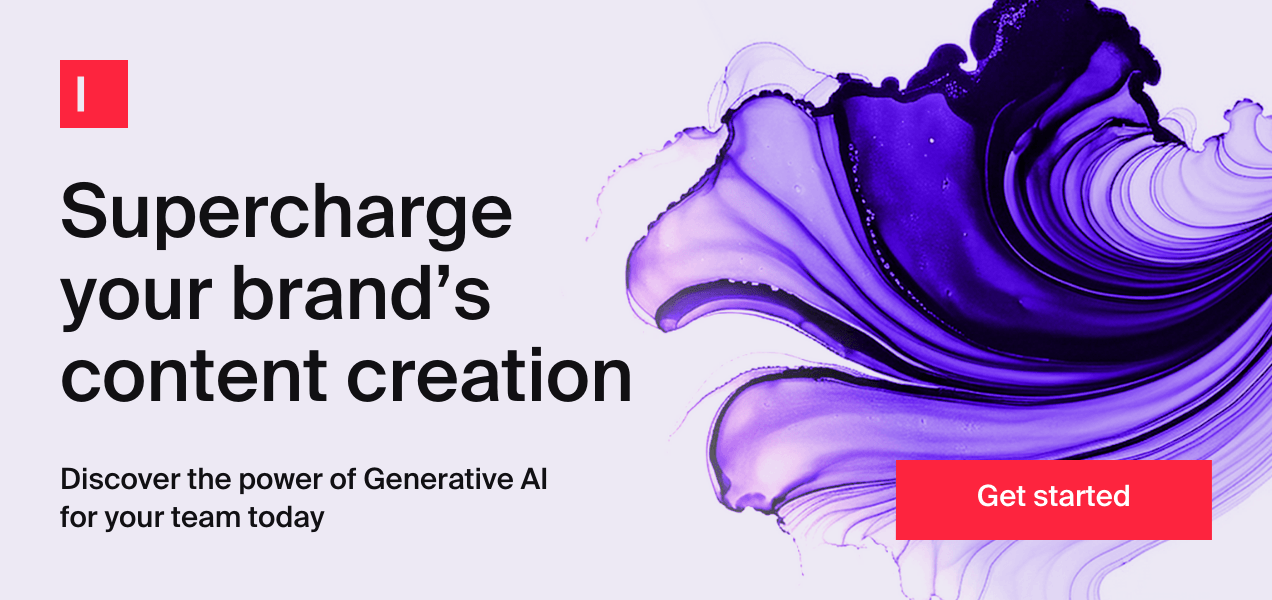
Share
Related articles

AI at Work
AI Agents in Marketing: Orchestrating Autonomous Marketing Tasks

Neelam Goswami · Content Marketing Associate
June 27th, 2025 · 13 min read

AI at Work
AI Content Strategy 101: Why Early Outputs Fall Short and How to Fix Them

Elah Horwitz · Customer Success Manager
July 31st, 2025 · 12 min read

AI at Work
AI Brand Management: How to Maintain Brand Consistency With AI Image Generators

Neelam Goswami · Content Marketing Associate
November 26th, 2025 · 13 min read